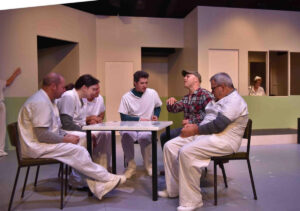Russian theremin virtuoso enthrals Hamilton audience
Lydia Kavina jetted in from Moscow for the first performance of David Sidwell’s Conversation between Theremin and Soprano at the Wintec Atrium recently.
Hamilton music lovers were treated to a virtuoso demonstration on an extraordinary instrument recently.
Russian musician Lydia Kavina played the theremin, an instrument that is not physically touched during performance, to an enthralled Spark Week audience.
Kavina was the guest of the School of Media Arts and the principal musician in composer David Sidwell’s first performance of Conversation between Theremin and Soprano.
Kavina, the great- niece of Russian electronics pioneer Leon Theremin, flew from Moscow to demonstrate the theremin .
Similar to a singing voice, very sensitive and not a machine, the theremin can alter its sound with the slightest change of a performer’s breath.
It requires an ear for musical sound but can teach the untrained or unmusical to read tones by “free styling.”
The performance also launched the English-language edition of a book on Theremin, titled The Soviet Faust.
The theremin is an ether-wave instrument/Etherophone/Thereminvox which produces sound by magnetic energy created through movement.
Two antennae are attached to the ends of an oblong box and sense the movement of the player.

A protégée of inventor Leon Theremin’s teachings from the age of eight, Kavina describes playing as creating melody with the movement of hand and finger.
The eerie sounds have been picked up by composers for science fiction soundtracks, film music and sound effects.
The theremin was used in several movie soundtracks during the 1950s and 1960s when it provided background mood music for such sci-fi classics as The Day the Earth Stood Still and It Came from Outer Space, as well as thriller soundtracks in The Lost Weekend and Spellbound.
Miss Kavina herself has been involved in 1000 theatre, radio, and television performances around the world – working on music scores for Tim Burton’s directed film Ed Wood (1994) and Brad Anderson’s The Machinist (2004).
Kavina described the performance, which incorporated a video by John Mandelberg, as very challenging.
“Such a collaboration of video, sound… was a theatrical production that had to come together for everyone [in a short amount of time],” Kavina said.
According to Kavina, Spark’s budding theremin players at her workshop the following day all had promise.
“They were very excellent, some get it straight away. Most musicians pick it up easily… it can take a very long time [for those not musically trained],” she said.
The four instrumentalists for the Spark Week performance in the Atrium auditorium were soprano Pamela Wallace, pianist Alexandra Wiltshire, cellist Tim Carpenter, and Debbie Nisbet on synthesiser.




